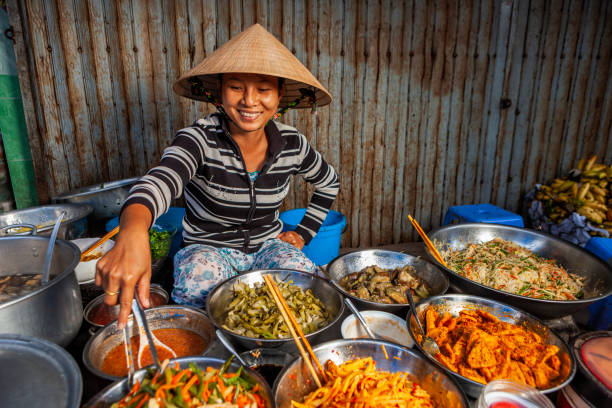Dive into the Vibrant World of Southeast Asian Street Food
Street food is a gastronomic hallmark of Southeast Asia. It's a vibrant hodgepodge of flavors, colors, and cultures, offering a culinary experience that's as diverse as the region itself. Today, we’re taking a deep dive into the world of Southeast Asian street food and why it’s creating ripples in the global food scene.

A Melting Pot of Flavors: Southeast Asian Street Food
The street food of Southeast Asia is a sensory overload. The aroma of sizzling meats, the vibrant colors of tropical fruits, the cacophony of vendors – it’s a symphony in every sense. Be it the spicy, tangy Som Tum from Thailand or the savory, comforting Pho from Vietnam, each dish tells a tale of its homeland, showcasing the region’s rich culinary heritage.
How Street Food Reflects Culture
Street food is more than just sustenance; it’s a reflection of local customs, history, and community. It showcases the region’s agricultural bounty and the influence of various cultures. For example, the popular Satay skewers display the influence of Middle Eastern cuisine, while the Nasi Goreng brings in the Chinese influence of fried rice.
Street Food: A Culinary Innovation Ground
Street food is a fertile ground for culinary innovation. The humble Banh Mi sandwich, for instance, merges French baguettes with Vietnamese ingredients like pickled vegetables and grilled meats. Similarly, Roti Canai, a flaky flatbread from Malaysia, is a delightful blend of Indian and Malay culinary traditions.
The Global Impact of Southeast Asian Street Food
The impact of Southeast Asian street food goes beyond its geographical borders. From food trucks in Los Angeles serving up Thai tacos to high-end restaurants in London dishing out gourmet Nasi Lemak, these flavors have permeated global dining trends, reflecting the world’s growing appetite for vibrant and authentic food experiences.
Southeast Asian Street Food: A Sustainable Choice
Street food also promotes sustainability. It reduces food waste by using every part of an animal or vegetable, supports local farmers, and provides income for small-scale vendors. Moreover, it’s usually served in reusable containers, minimizing plastic waste.
Quick Bites: Interesting Trivia
- The Pad Thai, a popular Thai street food, was created in the 1930s as part of a government campaign to promote nationalism.
- Vietnam’s Pho is traditionally a breakfast dish.
- Malaysia’s Penang city is often referred to as the ‘Street Food Capital’ of Asia.
In conclusion, Southeast Asian street food offers a diverse, delectable, and sustainable culinary experience. It’s a celebration of culture, community, and creativity on a plate. So, whether you’re a seasoned foodie or a curious gastronome, diving into this vibrant world is sure to tantalize your taste buds and broaden your culinary horizons.




